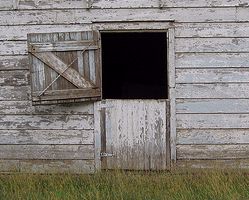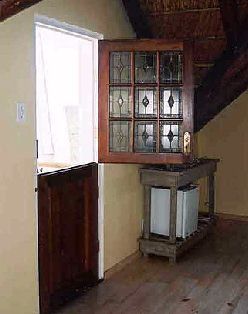|
Need more information? Use our search box
Dutch door. Stable door. Barn door. Half doors
A Dutch is a door that is divided in two horizontally so that either part can be left open or closed. The two doors can also be locked or latched together so they can be opened and closed as a single door. The two doors, top and bottom, are mounted in a single door frame with each section having two hinges.
As the name already indicates this type of door originated in the Netherlands in the late 1500s. Originally it was used strictly for homes on or close to farms. The design of the Dutch door allowed the top section to be opened to let light and fresh air in while at the same time the closed lower section would keep out wandering fowl and other loose running farm animals. Prior to being used for homes Dutch doors may have been used in stables. The farmer would be able to feed the horse or other farm animals through the opened top section while the closed lower section would keep the animal inside. Dutch doors are also known as stable doors in the UK.
Even though Dutch doors have been around for ages they are still used today in stables and in increasingly numbers in residential settings. Dutch doors can be used for outbuildings such as garden or tool sheds, workshops or even cabanas. In these settings Dutch doors can create a rustic or country style feeling.
Originally, Dutch doors for residential use, as described above, had no windows. However, today's Dutch doors often have a window or windows for the top section. Personally I like the solid bottom, window top combination.
Photo top right.
Old Dutch doors on a barn west of Bennington Nebraska on an abandonded Farmstead. Photo Credit: K. Eakins, Omaha, Ne
Photo lower right.
Dutch doors at a bed and breakfast place called Gables Country House.
in East Cintsa, South Africa. Photo Credit: Conspiracy of Happiness.
Photo to the left.
This solid oak Dutch door was made by the homeowner. It was designed to match the rest of the woodwork in the kitchen. The home is located in Pennsylvania. Photo credit: Tim Pospisil
|

 |